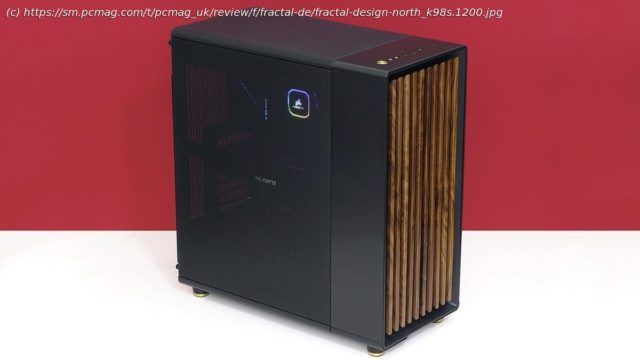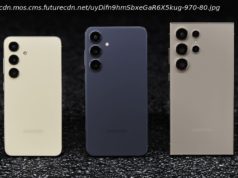Timber-faced tower takes PC cases into the woods
Wooden accents are far from new to the PC industry, yet they’re so rarely used that their appearance almost seems novel. The wooden slats of Fractal Design’s new North series ($129 for the wood-faced model we tested) set it apart from competing products, adding an air of opulence to an otherwise mundane product class. Previous trend-setters have included brushed-aluminum finishes and tempered-glass side panels, so will other companies copy the design theme? We hope so, but for now, the North is a solid tower in a class nearly of its own. If most of what you’ll see of your PC is the front face, it’s hard to find a more distinct, classy panel to expose to the world. The Design: Wood I Ever!
Speaking of themes, the North is available in white with silver and oak trim in addition to the black with gold and walnut trim shown. The gold (or silver) trim applies to bands around the feet in addition to the power button, headphone and microphone jacks, Type A (Gen 1) and Type-C (Gen 2) USB 3.x ports. Both color themes are available with the buyer’s choice of mesh or tempered-glass panels on the left side.
Dust filtration is available only for the front and bottom panels, the latter being a slide-out filter that covers the power supply air inlet. That may be enough filtration for most builds, as the dual 140mm intake fans that hide behind the front panel will tend to push air out of the case’s other holes.
Zooming away from the power supply filter reveals a rear panel with removable power supply bracket, a seven-card expansion card hole that’s made without separators so that it can alternatively support a vertical card bracket, a 120mm fan mount with slotted holes that allow vertical spacing adjustment, and a fabric pull tab that helps builders remove the top panel cover. Also notice the six unused mounting holes on the far edge, which we’ll discuss in a few paragraphs.
The front-panel dust filter is removable from the back of the face panel, which itself can be removed from the rest of the case by pulling outward on its bottom edge.
While the side panel on the right is an ordinary painted sheet, left panels are available in both tempered-glass and mesh-faced varieties. The mesh part is reinforced as shown.
Here’s what the top panel’s cover looks like removed. It has no filter, but many people who use its fan mounts may configure those fans as exhausts.
Under the cover is a mount large enough to fit the builder’s choice of two 120mm or two 140mm fans. Additional slots that look like they could hold fans don’t appear to be spaced for any familiar fan sizes.
Behind the painted-steel right side panel are a dual-2.5-inch-drive tray, a passive four-fan PWM power hub, a recessed cable loop, and a power-supply tunnel with two 3.5-inch drive trays. A box for the included hardware kit is included in one of the 3.5-inch bays, and all the extra mounting holes seen in the blown-up portion allow one of the trays to be slid forward in 1.5-inch increments. Power-supply length may be limited to as little as 165mm or extended up to 280mm depending on the number of trays installed and their placement.






